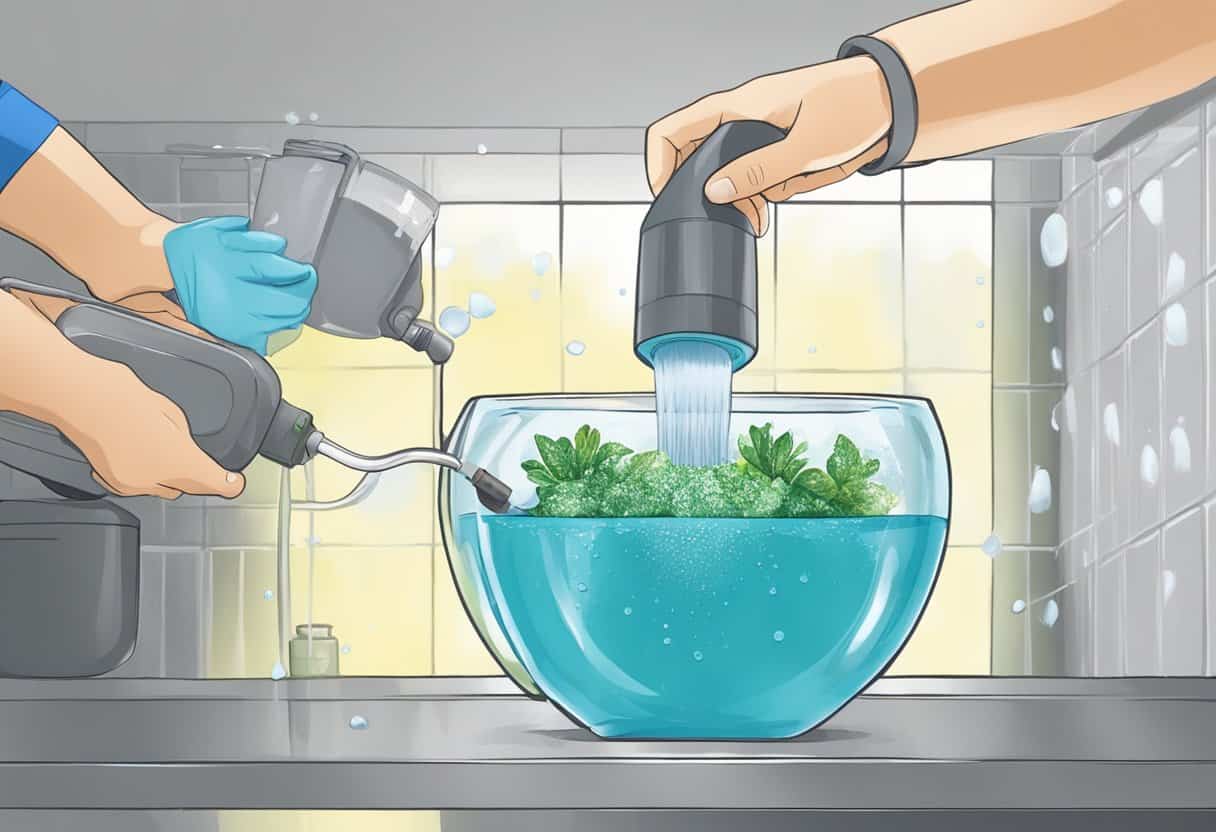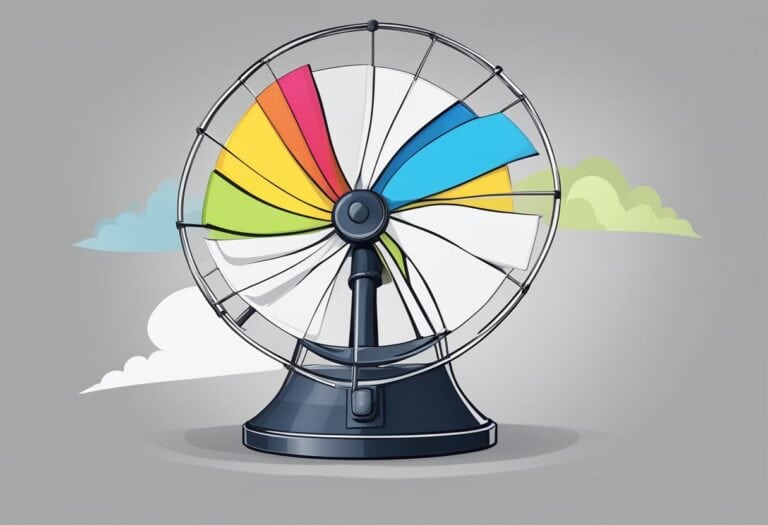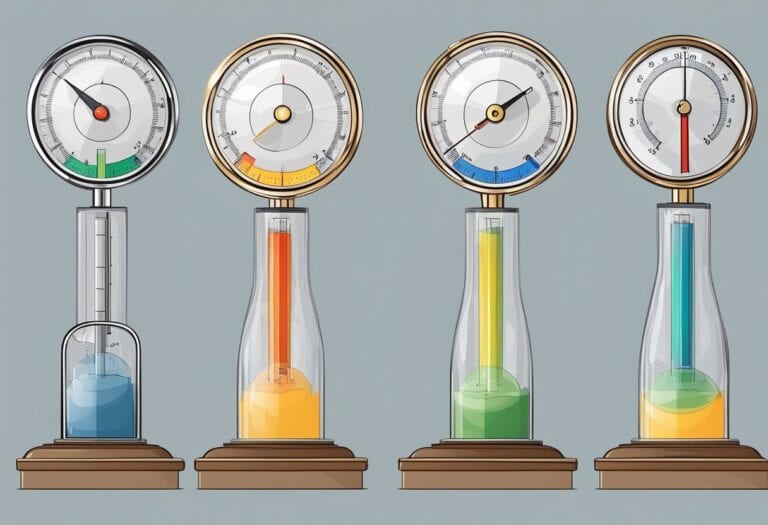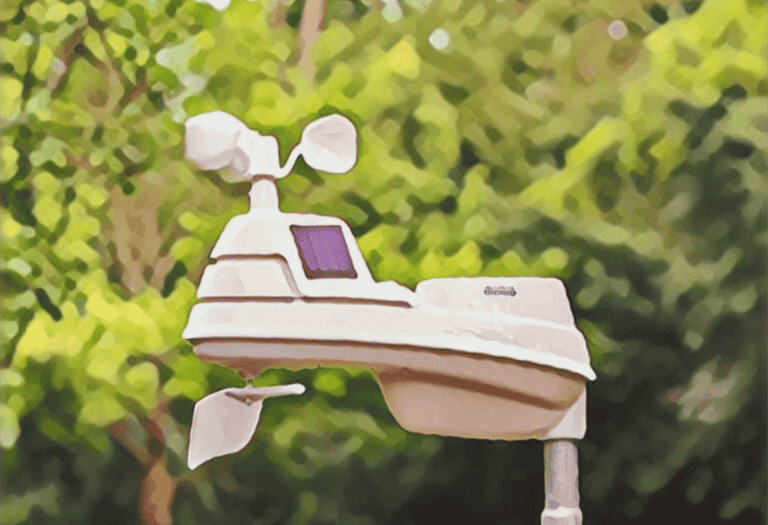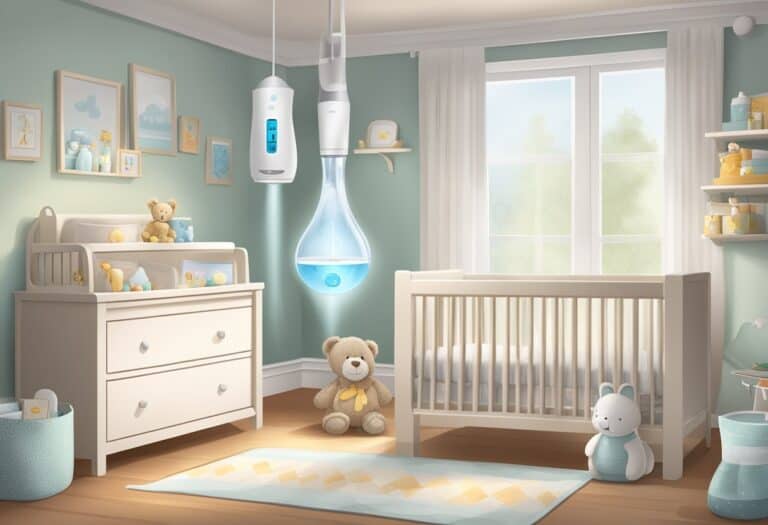Maintaining a clean humidifier is essential for your home’s air quality since a dirty unit can become a breeding ground for mold and bacteria.
Mold in your humidifier can disperse spores into the air, potentially leading to health problems and unpleasant odors. Cleaning mold out of your humidifier isn’t only about health; it’s also about the efficiency and longevity of the device. The process begins by understanding that mold thrives in moist environments and that your humidifier, if not properly maintained, provides a perfect habitat for mold growth.
The importance of routinely cleaning and maintaining your humidifier cannot be overstated. It involves regular inspection and cleaning of all parts that come in contact with water. While daily dumping of the leftover water and rinsing of the tank and tray are good habits, deep cleaning to remove mold requires a more thorough approach. Using the appropriate cleaning agents and following manufacturer-specific guidelines ensures that you do not only eliminate mold but also prevent its recurrence.
Proper storage when the humidifier is not in use is equally crucial in preventing mold from taking hold in the first place.
To clean mold from your humidifier, disassemble and empty it. Scrub with a vinegar-water mix, rinse thoroughly, and dry. Regular cleaning prevents mold. Dry before storing.
Understanding Mold in Humidifiers
Mold in humidifiers can compromise air quality and potentially lead to health hazards. Understanding how to identify and mitigate mold issues is crucial for maintaining a safe home environment.
Identifying Mold Issues
To identify mold in your humidifier, look for visible signs such as black, green, or pink spots near the water tank, on the vaporizer head, or within the interior chambers. A musty odor is another indicator that mold has begun to grow. Considering that mold and fungus spores are difficult to eradicate once established, early detection is key to preventing widespread mold growth.
Health Risks of Mold
Exposure to mold from a contaminated humidifier can pose significant health risks. Mold and bacteria in humidifiers can lead to a range of respiratory problems, including worsening asthma and allergies. Certain types of mold, such as black mold, are particularly known to be a health hazard. Additionally, it has been found that moldy humidity from devices such as humidifiers can trigger hypersensitivity pneumonitis and other serious conditions. It’s imperative to keep the humidifier clean to ensure the air you breathe is healthy.
Routine Cleaning and Maintenance
To ensure your humidifier operates effectively and remains free from mold, regular cleaning and maintenance are essential. This not only helps in extending the life of your device but also maintains a healthy moisture level in your environment.
Daily Care
Every day, empty the water reservoir and rinse it with warm water to remove any residue or buildup. Wipe all accessible surfaces with a clean cloth. It’s important to dry the reservoir completely before refilling it with distilled white vinegar, which prevents mineral deposit accumulation and inhibits microbial growth.
Weekly Disinfecting
Once a week, take time for a more thorough deep clean. First, change the filter as recommended by the manufacturer. Add a mixture of one part white vinegar to two parts water, or use a solution of half water and half hydrogen peroxide into the water tank. Allow this solution to sit for at least 30 minutes, then sanitize every part you can reach using a toothbrush or soft-bristled brush to scrub away any lingering mold or buildup. Rinse all cleaned parts thoroughly with water to ensure no cleaning agent remains. Dry all parts before reassembling the humidifier.
Regular cleaning not only maintains your humidifier’s efficiency but also supports a healthier indoor air quality by preventing the dispersal of irritants such as mold spores. Remember to wear an N-95 mask if you’re sensitive to dust or mold while cleaning.
Deep Cleaning Process

To ensure the effectiveness and hygiene of your humidifier, a periodic deep cleaning is essential. This involves disassembling parts, thorough scrubbing, and using appropriate solutions to remove mold and mineral buildup.
Disassembly and Emptying
Begin the deep cleaning process by unplugging your humidifier. Carefully disassemble your humidifier according to the manufacturer’s instructions. Remove the water tank and empty any remaining water. If your model includes a filter, remove it and set aside. Emptying the tank and disassembling the parts lays the groundwork for a successful deep clean.
Cleaning the Tank
Use a bleach solution, consisting of one teaspoon of bleach per gallon of water, to clean the tank. Fill the tank with the bleach solution and let it sit for about 30 minutes; this helps to kill any mold or bacteria. Afterward, thoroughly rinse the tank with distilled or demineralized water to remove any bleach residue. Ensure it is rinsed until the smell of bleach is no longer present.
Scrubbing the Elements
For areas with mineral buildup, prepare a vinegar solution using a 1:1 ratio of distilled water to vinegar. Apply the solution with a toothbrush to scrub the nooks and crannies, targeting any stubborn buildup. Rinse all cleaned surfaces with distilled water and use a clean cloth to dry the components properly. Don’t forget to gently clean the humidifier filters and fan if applicable. Make sure each part is completely dry before reassembling your humidifier.
Prevention and Storage
Maintaining a mold-free humidifier involves consistent cleaning and proper storage methods. By addressing potential mold and bacteria growth proactively, you ensure better air quality and protect your health.
Preventing Mold Growth
To prevent mold spores from taking hold, regularly clean your humidifier with a solution of equal parts vinegar and fresh water. This acidic mixture helps to kill bacteria and mold, reducing the chance of itchy skin, nosebleeds, and irritated sinuses associated with mold exposure. Always wear goggles to protect your eyes during cleaning. Replace the humidifier filter as directed to prevent both mold and bacteria growth.
- Weekly Cleaning Routine:
- Turn off and unplug your humidifier.
- Remove and empty the water tank.
- Fill the tank with a 50/50 solution of vinegar and water.
- Clean all accessible surfaces with the solution.
- Rinse thoroughly with fresh water to remove vinegar residue.
Proper Storage Tips
When storing your humidifier, make sure it is completely dry to prevent mold and bacteria. Store the device in a dry air environment to help discourage moisture build-up, which can lead to mold growth and musty odors.
- Storage Checklist:
- Empty the water tank.
- Disassemble and wipe all parts completely dry.
- Store in a dry location with low moisture levels.
Bonus Tips:
- Always empty the tank after use; do not allow water to sit for extended periods.
- Consider using distilled water to minimize mineral deposits, which is a breeding ground for mold.
Frequently Asked Questions
In this section, we address common questions regarding mold removal from humidifiers, offering effective solutions and preventative measures to ensure a clean and healthy air-moisture environment.
What are the best methods for removing mold from a humidifier?
For thorough mold removal, disassemble your humidifier according to the manufacturer’s instructions. Use a solution of hydrogen peroxide or white vinegar and water to scrub all surfaces. After cleaning, rinse the parts with clean water and allow them to air dry completely before reassembly.
Can vinegar effectively clean mold from a humidifier, and how should it be used?
Yes, vinegar is a natural disinfectant that can kill mold. Fill the water tank with a mixture of one part white vinegar to one part water, let it sit for 30 minutes, then scrub the tank with a brush to remove mold. Rinse the tank thoroughly with water before use.
What health risks are associated with mold growth in humidifiers?
Mold in humidifiers can cause respiratory issues, including coughing, wheezing, and in more severe cases, infections in individuals with weakened immune systems. To maintain your health, it is crucial to prevent mold buildup in your humidifier.
How can you prevent mold from growing in your humidifier?
To prevent mold growth, empty the water tank, wipe all surfaces dry, and refill with fresh water daily. Use distilled water rather than tap water to reduce mineral build-up. Consider adding a few drops of tea tree oil or commercial humidifier tablets as natural mold inhibitors.
What steps should be taken if you find black or white mold in your humidifier?
If you discover black or white mold in your humidifier, stop using it immediately. Clean the humidifier thoroughly using the previously mentioned solutions, ensuring you reach all crevices where mold can grow. If mold persists, replace the humidifier.
How can you safely clean a humidifier filter that has mold on it?
To clean a moldy humidifier filter, remove the filter and soak it in a solution of equal parts water and white vinegar for 30 minutes. Rinse the filter with cool water and let it air dry. If the mold damage is extensive, it’s best to replace the filter.

